World Meteorological Organization
|
المنظمة العالمية للأرصاد الجوية Всемирная Метеорологическая Организация 世界气象组织 | |
 | |
|
WMO flag | |
| Abbreviation |
WMO OMM |
|---|---|
| Formation | 1950 |
| Type | UN agency |
| Legal status | Active |
| Headquarters | Geneva, Switzerland |
Head |
Petteri Taalas (Secretary-General) David Grimes (President) |
| Website |
www |
The World Meteorological Organization (WMO) is an intergovernmental organization with a membership of 191 Member States and Territories. It originated from the International Meteorological Organization (IMO), which was founded in 1873. Established in 1950, WMO became the specialised agency of the United Nations for meteorology (weather and climate), operational hydrology and related geophysical sciences. It has its headquarters in Geneva, Switzerland, and is a member of the United Nations Development Group.[1] The current Secretary-General is Petteri Taalas.[2] The current president is David Grimes.[3]
The organization
The World Meteorological Organization (WMO) is a specialized agency of the United Nations. It is the UN system's authoritative voice on the state and behavior of the Earth's atmosphere, its interaction with the oceans, the climate it produces and the resulting distribution of water resources.[4]
WMO has a membership of 191 member states and territories, as of February 2014. The Convention of the World Meteorological Organization was signed 11 October 1947[5] and established upon ratification on 23 March 1950. WMO became the specialized agency of the United Nations in 1951 for meteorology (weather and climate), operational hydrology and related geophysical sciences. It originated from the International Meteorological Organization (IMO), which was founded in 1873.[4]
The WMO hierarchy:
- The World Meteorological Congress determines the policy of WMO and meets every four years. Each Member country is represented by a Permanent Representative with WMO. The Permanent Representative should be the director of the National Meteorological or Hydrometeorological Service.
- The Executive Council (EC) implements Congress decisions and meets once a year.
- Six regional associations for addressing regional concerns (see the section on regional associations, below)
- Eight technical commissions provide technical recommendations for WMO and the national services.
- The secretariat headed by the Secretary-General coordinates the activities of WMO with a regular staff of more than 250 employees.[6]
Functions
The World Meteorological Organization provides a framework for international cooperation in the development of meteorology and operational hydrology and their practical application.[7]
Since its establishment, WMO has played a unique and powerful role in contributing to the safety and welfare of humanity. Under WMO leadership and within the framework of WMO programs,[8] National Meteorological and Hydrological Services[9] contribute substantially to the protection of life and property against natural disasters, to safeguarding the environment and to enhancing the economic and social well-being of all sectors of society in areas such as food security, water resources and transport.[7]
The WMO and United Nations Environment Programme (UNEP) jointly created the Intergovernmental Panel on Climate Change (IPCC). It is also directly responsible for the creation of the Global Atmosphere Watch (GAW). The IPCC has received the Nobel Peace Prize in 2007 "for their efforts to build up and disseminate greater knowledge about man-made climate change, and to lay the foundations for the measures that are needed to counteract such change."[10]
WMO promotes cooperation in the establishment of networks for making meteorological, climatological, hydrological and geophysical observations, as well as the exchange, processing and standardization of related data, and assists technology transfer, training and research. It also fosters collaboration between the National Meteorological and Hydrological Services of its Members and furthers the application of meteorology to public weather services, agriculture, aviation, shipping, the environment, water issues and the mitigation of the impacts of natural disasters.
WMO facilitates the free and unrestricted exchange of data and information, products and services in real- or near-real time on matters relating to safety and security of society, economic welfare and the protection of the environment. It contributes to policy formulation in these areas at national and international levels.[11]
In the specific case of weather-, climate and water-related hazards, which account for nearly 90% of all natural disasters, WMO's programs provide vital information for the advance warnings that save lives and reduce damage to property and the environment. WMO also contributes to reducing the impacts of human-induced disasters, such as those associated with chemical and nuclear accidents, forest fire and volcanic ash. Studies have shown that, apart from the incalculable benefit to human well-being, every dollar invested in meteorological and hydrological services produces an economic return many times greater, often ten times or more.
WMO plays a leading role in international efforts to monitor and protect the environment through its programs. In collaboration with other UN agencies and the National Meteorological and Hydrological Services, WMO supports the implementation of a number of environmental conventions[12] and is instrumental in providing advice and assessments to governments on related matters. These activities contribute towards ensuring the sustainable development and well-being of nations.
WMO publishes the International Cloud Atlas, the international standard cloud atlas since 1896.
Meteorological codes
In keeping with its mandate to promote the standardization of meteorological observations, the WMO maintains numerous code forms for the representation and exchange of meteorological, oceanographical, and hydrological data. The traditional code forms, such as SYNOP, CLIMAT and TEMP, are character-based and their coding is position-based. Newer WMO code forms are designed for portability, extensibility and universality. These are BUFR, CREX, and, for gridded geo-positioned data, GRIB.
World Meteorological Day


- World Meteorological Day is held annually on 23 March.[13]
Awards and prizes
- International Meteorological Organization Prize[14]
- Vilho Väisälä Award[15]
- Norbert Gerbier-Mumm International Award[16]
- WMO Research Award for Young Scientists[17]
- Professor Mariolopoulus Award[18]
WMO conference on climate prediction and information for decision-making
World Climate Conference-3 (WCC-3) was held from 31 August to 4 September 2009 in Geneva, Switzerland, under the auspices of WMO. Its goal was to address advancements in seasonal to multi-decadal climate predictions and to spur their applications to decision-making in socio-economic sectors, including food, water, energy, health, tourism and development sectors. The Conference aimed to contribute to the achievement of the United Nations Millennium Development Goals and broader UN climate goals through support for climate adaptation.[19]
Membership
As of February 2014, member states of the organisation include 183 of the 193 UN members, the Cook Islands and Niue, for a total of 185 member states. Additionally there are 6 member territories, listed below.[20]
There are 10 states that are members of the United Nations, but not of the WMO. These are: Andorra, Equatorial Guinea, Grenada, Liechtenstein, Marshall Islands, Nauru, Palau, Saint Kitts and Nevis, Saint Vincent and the Grenadines and San Marino; the most populous of these countries is Equatorial Guinea, with nearly 700,000 inhabitants. Non-members of either organisation include the Vatican City and the states with limited recognition.
The six member territories are: the British Caribbean Territories (joint meteorological organisation and membership),[21] French Polynesia, Hong Kong, Macau, Curaçao and Sint Maarten (joint meteorological service and membership),[21] and New Caledonia. Below is a table of all members with admission dates.
Current member states
States that joined the WMO before they joined the UN are marked with a blue background. States that are members of the WMO, but not of the UN are marked with a green background. For comparison, see Member states of the United Nations. The dates are the dates of the ratification of the WMO Convention by the member, or the date of accession.[22] The national meteorological services belonging to each member state are also listed.[23]
| Member states | National Meteorological Services | Date of admission |
|---|---|---|
| |
Afghanistan Meteorological Authority | 11 September 1956 |
| |
Institute of Hydrometeorology | 29 July 1957 |
| |
4 April 1963 | |
| |
16 March 1977 | |
| |
Antigua and Barbuda Meteorological Services | 16 November 1988 |
| |
2 January 1951 | |
| |
16 September 1992 | |
| |
Bureau of Meteorology | 14 March 1949 |
| |
Central Institution for Meteorology and Geodynamics | 23 February 1955 |
| |
27 December 1993 | |
| |
Bahamas Meteorology Department | 29 November 1973 |
| |
21 April 1980 | |
| |
Bangladesh Meteorological Department | 24 August 1973 |
| |
Barbados Meteorological Services | 22 March 1967 |
| |
12 April 1948 | |
| |
Royal Meteorological Institute | 2 February 1951 |
| |
Belize National Meteorological Service | 25 May 1982 |
| |
14 April 1961 | |
| |
11 February 2003 | |
| |
15 May 1954 | |
| |
1 June 1994 | |
| |
16 October 1967 | |
| |
15 March 1950 | |
| |
26 November 1984 | |
| |
12 March 1952 | |
| |
31 October 1960 | |
| |
30 October 1962 | |
| |
8 November 1955 | |
| |
17 December 1960 | |
| |
Meteorological Service of Canada | 28 July 1950 |
| |
21 October 1975 | |
| |
28 June 1961 | |
| |
2 February 1961 | |
| |
9 May 1957 | |
| |
China Meteorological Administration | 25 February 1972[24] |
| |
Institute of Hydrology, Meteorology and Environmental Studies | 5 January 1962 |
| |
15 March 1976 | |
| |
21 November 1960 | |
| |
5 November 1960 | |
| |
18 October 1995 | |
| |
Instituto Meteorológico Nacional | 16 December 1960 |
| |
31 October 1960 | |
| |
Croatian Meteorological and Hydrological Service | 9 October 1992 |
| |
4 March 1952 | |
| |
11 April 1963 | |
| |
Czech Hydrometeorological Institute | 25 January 1993 |
| |
Danish Meteorological Institute | 10 July 1951 |
| |
30 June 1978 | |
| |
21 February 1980 | |
| |
15 September 1949 | |
| |
Instituto Nacional de Meteorología e Hidrología (Ecuador) | 7 June 1950 |
| |
10 January 1950 | |
| |
27 May 1955 | |
| |
8 July 1993 | |
| |
Estonian Weather Service | 21 August 1992 |
| |
3 December 1953 | |
| |
Fiji Meteorological Service | 18 March 1980 |
| |
Finnish Meteorological Institute | 7 January 1949 |
| |
Météo-France | 5 December 1949 |
| |
5 June 1961 | |
| |
2 October 1978 | |
| |
1 September 1993 | |
| |
Deutscher Wetterdienst | 10 June 1954 |
| |
6 May 1957 | |
| |
Hellenic National Meteorological Service | 20 January 1950 |
| |
Instituto Nacional de Sismología, Vulcanología, Meteorología e Hidrología (INSIVUMEH) | 21 March 1952 |
| |
27 March 1959 | |
| |
15 December 1977 | |
| |
22 November 1966 | |
| |
14 August 1951 | |
| |
10 October 1960 | |
| |
15 February 1951 | |
| |
Icelandic Meteorological Office | 16 January 1948 |
| |
India Meteorological Department | 27 April 1949 |
| |
Indonesian Agency for Meteorology, Climatology and Geophysics | 16 November 1950 |
| |
Iran Meteorological Organization | 30 September 1959 |
| |
21 February 1950 | |
| |
Met Éireann | 14 March 1950 |
| |
Israel Meteorological Service | 30 September 1949 |
| |
Servizio Meteorologico | 9 January 1951 |
| |
29 May 1963 | |
| |
Japan Meteorological Agency | 11 August 1953 |
| |
11 July 1955 | |
| |
5 May 1993 | |
| |
2 June 1964 | |
| |
26 March 2003 | |
| |
27 May 1975 | |
| |
Korea Meteorological Administration | 15 February 1956 |
| |
1 December 1962 | |
| |
20 July 1994 | |
| |
1 June 1955 | |
| |
Latvian Environment, Geology and Meteorology Centre | 15 May 1992 |
| |
22 December 1948 | |
| |
3 August 1979 | |
| |
7 February 1974 | |
| |
29 December 1955 | |
| |
Lithuanian Hydrometeorological Service | 3 June 1992 |
| |
29 October 1952 | |
| |
1 June 1993 | |
| |
15 December 1960 | |
| |
15 February 1965 | |
| |
Malaysian Meteorological Department (MetMalaysia) | 19 May 1958[26] |
| |
1 June 1978 | |
| |
11 November 1960 | |
| |
28 December 1976 | |
| |
23 January 1961 | |
| |
17 July 1969 | |
| |
Servicio Meteorológico Nacional (SMN) | 27 May 1949 |
| |
20 September 1995 | |
| |
21 November 1994 | |
| |
9 April 1996 | |
| |
4 April 1963 | |
| |
Institute of Hydrometeorology and Seismology of Montenegro | 6 December 2006 |
| |
3 January 1957 | |
| |
Mozambique National Institute of Meteorology | 21 June 1976 |
| |
19 August 1949 | |
| |
6 February 1991 | |
| |
Department of Hydrology and Meteorology | 12 August 1966 |
| |
Royal Netherlands Meteorological Institute | 12 September 1951 |
| |
MetService | 2 April 1948 |
| |
27 February 1959 | |
| |
28 October 1960 | |
| |
30 November 1960 | |
| |
31 May 1996 | |
| |
Norwegian Meteorological Institute | 9 December 1948 |
| |
3 January 1975 | |
| |
Pakistan Meteorological Department | 11 April 1950 |
| |
12 September 1967 | |
| |
15 December 1975 | |
| |
15 September 1950 | |
| |
30 December 1949 | |
| |
Philippine Atmospheric, Geophysical and Astronomical Services Administration (PAGASA) | 5 April 1949 |
| |
Institute of Meteorology and Water Management (IMGW-PIB) | 16 May 1950 |
| |
Instituto Português do Mar e da Atmosfera (IPMA) | 15 January 1951 |
| |
4 April 1975 | |
| |
Administrația Națională de Meteorologie | 18 August 1948 |
| |
Federal Service for Hydrometeorology and Environmental Monitoring of Russia (Roshydromet) | 2 April 1948 |
| |
4 February 1963 | |
| |
2 March 1981 | |
| |
11 July 1995 | |
| |
23 November 1976 | |
| |
26 February 1959 | |
| |
1 November 1960 | |
| |
Republic Hydrometeorological Service of Serbia | 21 February 2001 |
| |
15 February 1977 | |
| |
30 March 1962 | |
| |
24 January 1966 | |
| |
Slovak Hydrometeorological Institute | 11 February 1993 |
| |
Slovenian Environment Agency | 20 August 1992 |
| |
6 May 1985 | |
| |
2 March 1964 | |
| |
South African Weather Service | 17 January 1950 |
| |
14 December 2012 | |
| |
Agencia Estatal de Meteorología | 27 February 1951 |
| |
23 May 1951 | |
| |
3 December 1956 | |
| |
26 July 1976 | |
| |
2 November 1982 | |
| |
Swedish Meteorological and Hydrological Institute | 10 November 1948 |
| |
Federal Office of Meteorology and Climatology (MeteoSwiss) | 23 February 1949 |
| |
16 July 1952 | |
| |
10 August 1993 | |
| |
Tanzania Meteorological Agency | 14 September 1962 |
| |
11 July 1949 | |
| |
4 December 2009 | |
| |
28 October 1960 | |
| |
Tonga Meteorological Service | 25 February 1996 |
| |
1 February 1963 | |
| |
22 January 1957 | |
| |
Turkish State Meteorological Service | 5 August 1949 |
| |
4 December 1992 | |
| |
22 September 2012 | |
| |
15 March 1963 | |
| |
Ukrainian Hydrometeorological Center | 12 April 1948 |
| |
17 December 1986 | |
| |
Met Office | 14 December 1948 |
| |
National Oceanic and Atmospheric Administration | 4 May 1949 |
| |
11 January 1951 | |
| |
23 December 1992 | |
| |
24 June 1982 | |
| |
16 June 1950 | |
| |
2 July 1976[27] | |
| |
22 May 1990[28] | |
| |
28 December 1964 | |
| |
12 January 1981 |
Historical member states
| Member states | Date of admission | Date membership ended | Note |
|---|---|---|---|
| |
2 March 1951 | 25 February 1972 | Seat in the UN transferred to the People's Republic of China (see China and the United Nations for details) |
| |
23 May 1973 | 3 October 1990 | German reunification |
| |
2 March 1955 | 2 July 1976 | Reunification of Vietnam |
| |
8 July 1975 | 2 July 1976 | Reunification of Vietnam |
| |
8 June 1971 | 22 May 1990 | Yemeni unification |
| |
28 January 1969 | 22 May 1990 | Yemeni unification |
| |
7 December 1948 | ? | Breakup of Yugoslavia |
Member territories
| Member territories | Meteorological Services | Date of admission |
|---|---|---|
| British Caribbean Territories | Caribbean Meteorological Organisation | 24 September 1953 |
| |
Meteorological Department Curaçao | 12 September 1951 |
| |
Météo-France Polynesie Francaise | 5 December 1949 |
| |
Hong Kong Observatory | 14 December 1948 |
| |
Macao Meteorological and Geophysical Bureau | 24 January 1996 |
| |
Météo-France Nouvelle-Calédonie | 5 December 1949 |
Membership by regional associations
The member states of the WMO are divided into six regional associations. The division is as follows:[29]
| Region | Number of member states | Percentage of total | Number of member territories | Percentage of total |
|---|---|---|---|---|
| I | 57 | 31% | 0 | 0% |
| II | 33 | 18% | 2 | 33% |
| III | 13 | 7% | 0 | 0% |
| IV | 25 | 14% | 2 | 33% |
| V | 21 | 11% | 2 | 33% |
| VI | 50 | 27% | 0 | 0% |
| WMO | 185 | 100% | 6 | 100% |
The sum of member states in the regional associations is larger than the total number of member states because some nations are members to more than one regional association.
Region I (Africa)
Region I consists of the nations of Africa and a few former colonial powers, and has 57 member states and no member territories; these are:[30]
 Algeria
Algeria Angola
Angola Benin
Benin Botswana
Botswana Burkina Faso
Burkina Faso Burundi
Burundi Cameroon
Cameroon Cape Verde
Cape Verde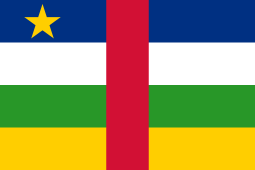 Central African Republic
Central African Republic Chad
Chad Comoros
Comoros Republic of the Congo
Republic of the Congo Côte d'Ivoire
Côte d'Ivoire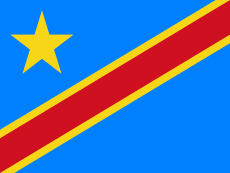 Democratic Republic of the Congo
Democratic Republic of the Congo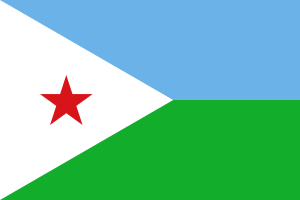 Djibouti
Djibouti Egypt
Egypt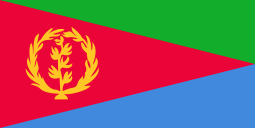 Eritrea
Eritrea Ethiopia
Ethiopia France
France Gabon
Gabon The Gambia
The Gambia Ghana
Ghana Guinea
Guinea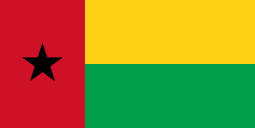 Guinea-Bissau
Guinea-Bissau Kenya
Kenya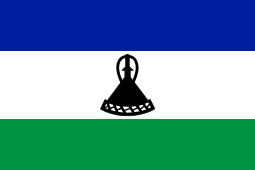 Lesotho
Lesotho Liberia
Liberia Libya
Libya Madagascar
Madagascar Malawi
Malawi Mali
Mali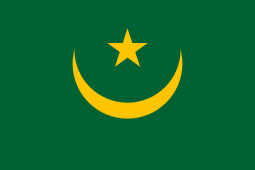 Mauritania
Mauritania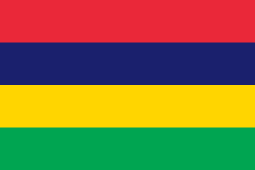 Mauritius
Mauritius Morocco
Morocco Mozambique
Mozambique Namibia
Namibia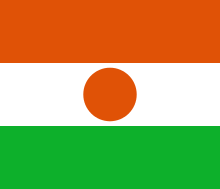 Niger
Niger Nigeria
Nigeria Portugal
Portugal Rwanda
Rwanda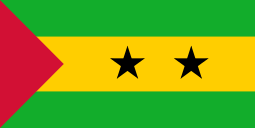 São Tomé and Príncipe
São Tomé and Príncipe Senegal
Senegal Seychelles
Seychelles Sierra Leone
Sierra Leone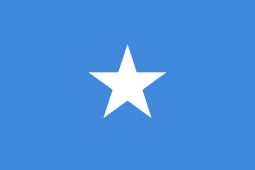 Somalia
Somalia South Africa
South Africa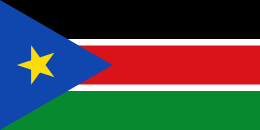 South Sudan
South Sudan Spain
Spain Sudan
Sudan Swaziland
Swaziland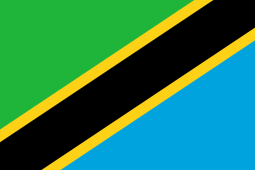 Tanzania, United Republic of
Tanzania, United Republic of Togo
Togo Tunisia
Tunisia Uganda
Uganda Zambia
Zambia Zimbabwe
Zimbabwe
Not member
Region II (Asia)
Region II consists of nations in Asia, having a total of 33 member states and 2 member territories. The member states are:[31]
 Afghanistan
Afghanistan Bahrain
Bahrain Bangladesh
Bangladesh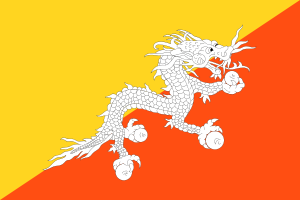 Bhutan
Bhutan Cambodia
Cambodia People's Republic of China
People's Republic of China Democratic People's Republic of Korea
Democratic People's Republic of Korea India
India Iran, Islamic Republic of
Iran, Islamic Republic of Iraq
Iraq Japan
Japan Kazakhstan
Kazakhstan Kuwait
Kuwait Kyrgyzstan
Kyrgyzstan Lao People's Democratic Republic
Lao People's Democratic Republic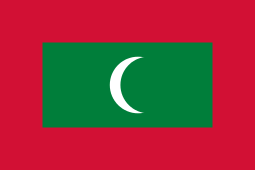 Maldives
Maldives Mongolia
Mongolia Myanmar
Myanmar Nepal
Nepal Oman
Oman Pakistan
Pakistan Qatar
Qatar Republic of Korea
Republic of Korea Russian Federation
Russian Federation Saudi Arabia
Saudi Arabia Sri Lanka
Sri Lanka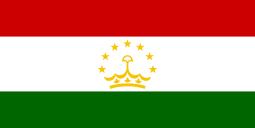 Tajikistan
Tajikistan Thailand
Thailand Turkmenistan
Turkmenistan United Arab Emirates
United Arab Emirates Uzbekistan
Uzbekistan Viet Nam
Viet Nam Yemen
Yemen
The member territories are:
Region III (South America)
Region III consists of the nations of South America, including France (French Guiana is an overseas region of France in South America). It has a total of 13 member states and no member territories. The member states are:[32]
Region IV (North America, Central America, and the Caribbean)
Region IV consists of the nations of North America, Central America, and the Caribbean, including three nations based in Europe with dependencies within the region. It has a total of 25 member states and 2 member territories. The member states are:[33]
 Antigua and Barbuda
Antigua and Barbuda Bahamas
Bahamas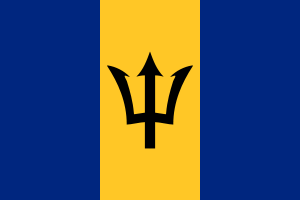 Barbados
Barbados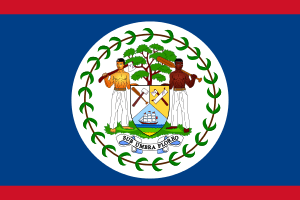 Belize
Belize Canada
Canada Colombia
Colombia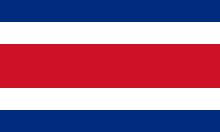 Costa Rica
Costa Rica Cuba
Cuba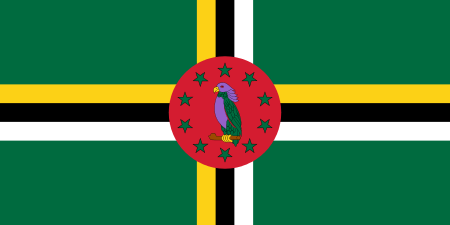 Dominica
Dominica Dominican Republic
Dominican Republic El Salvador
El Salvador France
France Guatemala
Guatemala Haiti
Haiti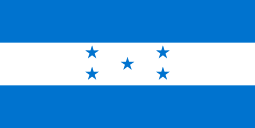 Honduras
Honduras Jamaica
Jamaica Mexico
Mexico Netherlands
Netherlands Nicaragua
Nicaragua Panama
Panama Saint Lucia
Saint Lucia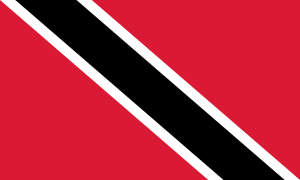 Trinidad and Tobago
Trinidad and Tobago United Kingdom of Great Britain and Northern Ireland
United Kingdom of Great Britain and Northern Ireland United States of America
United States of America Venezuela, Bolivarian Republic of
Venezuela, Bolivarian Republic of
The two member territories are:
Not members
Region V (South-West Pacific)
Region V consists of nations in the south-west Pacific. This includes 21 member states and 2 member territories. The member states are:[34]
 Australia
Australia Brunei Darussalam
Brunei Darussalam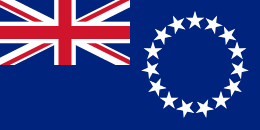 Cook Islands
Cook Islands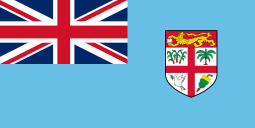 Fiji
Fiji Indonesia
Indonesia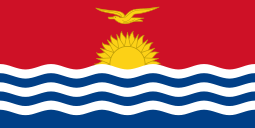 Kiribati
Kiribati Malaysia
Malaysia Federated States of Micronesia
Federated States of Micronesia New Zealand
New Zealand Niue
Niue Papua New Guinea
Papua New Guinea Philippines
Philippines Samoa
Samoa Singapore
Singapore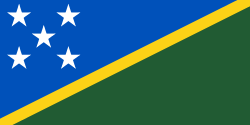 Solomon Islands
Solomon Islands Timor-Leste
Timor-Leste Tonga
Tonga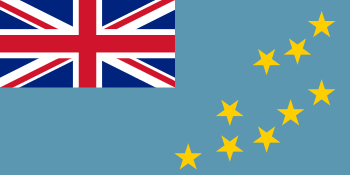 Tuvalu
Tuvalu United Kingdom of Great Britain and Northern Ireland
United Kingdom of Great Britain and Northern Ireland United States of America
United States of America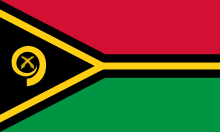 Vanuatu
Vanuatu
The ![]() Cook Islands and
Cook Islands and ![]() Niue are both member states despite the fact that neither is a member state of the United Nations; both are in free association with New Zealand.
Niue are both member states despite the fact that neither is a member state of the United Nations; both are in free association with New Zealand.
The member territories are:
Not members
Region VI (Europe)
Region VI consists mostly of nations in Europe, but also of a few in Western Asia. It has 50 member states and no member territories. These are:[35]
 Albania
Albania Armenia
Armenia Austria
Austria Azerbaijan
Azerbaijan Belarus
Belarus.svg.png) Belgium
Belgium Bosnia and Herzegovina
Bosnia and Herzegovina Bulgaria
Bulgaria Croatia
Croatia Cyprus
Cyprus Czech Republic
Czech Republic Denmark
Denmark Estonia
Estonia Finland
Finland France
France Georgia
Georgia Germany
Germany Greece
Greece Hungary
Hungary Iceland
Iceland Ireland
Ireland Israel
Israel Italy
Italy Jordan
Jordan Kazakhstan
Kazakhstan Latvia
Latvia Lebanon
Lebanon Lithuania
Lithuania Luxembourg
Luxembourg Malta
Malta Monaco
Monaco Montenegro
Montenegro Netherlands
Netherlands Norway
Norway Poland
Poland Portugal
Portugal Romania
Romania Republic of Moldova
Republic of Moldova Russian Federation
Russian Federation Serbia
Serbia Slovakia
Slovakia Slovenia
Slovenia Spain
Spain Sweden
Sweden Switzerland
Switzerland Syrian Arab Republic
Syrian Arab Republic Republic of Macedonia[25]
Republic of Macedonia[25] Turkey
Turkey Ukraine
Ukraine United Kingdom of Great Britain and Northern Ireland
United Kingdom of Great Britain and Northern Ireland
Not members
States with membership in more than one region
A total of ten member states have membership in more than one region. Two nations are members to four different regions, while eight are members of two regions. These nations, with their regions, are as follows:
 France (Regions I, III, IV, and VI)
France (Regions I, III, IV, and VI) United Kingdom (Regions I, IV, V, and VI)
United Kingdom (Regions I, IV, V, and VI) Colombia (Regions III and IV)
Colombia (Regions III and IV) Kazakhstan (Regions II and VI)
Kazakhstan (Regions II and VI) Netherlands (Regions IV and VI)
Netherlands (Regions IV and VI) Portugal (Regions I and VI)
Portugal (Regions I and VI) Russian Federation (Regions II and VI)
Russian Federation (Regions II and VI) Spain (Regions I and VI)
Spain (Regions I and VI) United States of America (Regions IV and V)
United States of America (Regions IV and V) Venezuela (Regions III and IV)
Venezuela (Regions III and IV)
See also
- Aircraft Meteorological Data Relay (AMDAR)
- Cloud atlas
- Global Atmospheric Research Program (GARP)
- International Cloud Atlas
- Regional Specialized Meteorological Center
References
- ↑ "UNDG Members". United Nations Development Group. Retrieved 7 August 2013.
- ↑ "Secretary-General". World Meteorological Organization. Retrieved 7 August 2013.
- ↑ "President". World Meteorological Organization. Retrieved 7 August 2013.
- 1 2 WMO in Brief – World Meteorological Organization (WMO). Wmo.int (1 January 2013). Retrieved on 22 August 2013.
- ↑ Convention of the World Meteorological Organization.
- ↑ WMO Strategic Plan
- 1 2 PWMU. "WMO in Brief – World Meteorological Organization (WMO)". wmo.int. Retrieved 12 January 2014.
- ↑ WMO.int
- ↑ WMO.int
- ↑ "IPCC Nobel Peace Prize". Nobel Prize Committee. 12 October 2007. Retrieved 20 February 2010.
- ↑ Gwam, C. U. (2011). "World meteorological organization (WMO)". Yearbook of International Environment Law. 21 (1): 617–632. Retrieved 18 September 2016.
- ↑ WMO.int
- ↑ "World Meteorological Day". World Meteorological Organization. Retrieved 15 July 2013.
- ↑ http://www.wmo.int/pages/about/awards/awards_imo_new_en.html
- ↑ http://www.wmo.int/pages/about/awards/vaisalaaward_en.html
- ↑ http://www.wmo.int/pages/about/awards/norbert-gerbier-mumm_en.html
- ↑ http://www.wmo.int/pages/about/awards/research_en.html
- ↑ http://www.wmo.int/pages/about/awards/mariolopoulos_award_en.html
- ↑ WCC-3
- ↑ WMO membership
- 1 2 WMO National services
- ↑ "Members of the World Meteorological Organization with date of ratification or accession". World Meteorological Organization. Retrieved 22 August 2013.
- ↑ "National Meteorological or Hydrometeorological Services of Members". World Meteorological Organization. Retrieved 19 October 2013.
- ↑ The following statement is given at the WMO official site at the request of the Government of the People's Republic of China: "On 11 October 1947, the representative of the Chinese Government signed the Convention of the World Meteorological Organization. After the founding of the People's Republic of China, her rightful seat in WMO was usurped by the Chiang Kai-shek clique, whose 'ratification' of the Convention of the World Meteorological Organization on 2 March 1951 was illegal and null and void. The rightful seat of the People's Republic of China was restored to her on 25 February 1972." For details, see China and the United Nations.
- 1 2 Referred to by the United Nations as "The Former Yugoslav Republic of Macedonia" due to the Macedonia naming dispute.
- ↑ http://www.met.gov.my/index.php?option=com_content&task=view&id=100&Itemid=177
- ↑ Both North and South Vietnam were members of the WMO prior to this date, which is the date of the reunification of Vietnam.
- ↑ This is the date of the unification of the Yemen Arab Republic and the People's Democratic Republic of Yemen, both of which were WMO members before this date.
- ↑ "Members of WMO". World Meteorological Organization. Retrieved 22 August 2013.
- ↑ "Members of Regional Association I (Africa)". World Meteorological Organization. Retrieved 22 Aug 2013.
- ↑ "Members of Regional Association II (Asia)". World Meteorological Organization. Retrieved 22 Aug 2013.
- ↑ "Members of Regional Association III (South America)". World Meteorological Organization. Retrieved 22 Aug 2013.
- ↑ "Members of Regional Association IV (North America, Central America and the Caribbean)". World Meteorological Organization. Retrieved 22 Aug 2013.
- ↑ "Members of Regional Association V (South-West Pacific)". World Meteorological Organization. Retrieved 22 Aug 2013.
- ↑ "Members of Regional Association IV (Europe)". World Meteorological Organization. Retrieved 22 Aug 2013.
External links
| Wikisource has original text related to this article: |
| Wikimedia Commons has media related to World Meteorological Organization. |
- – Official Website
- WMO country codes from the International Comprehensive Ocean-Atmosphere Data Set
- WCC-3
